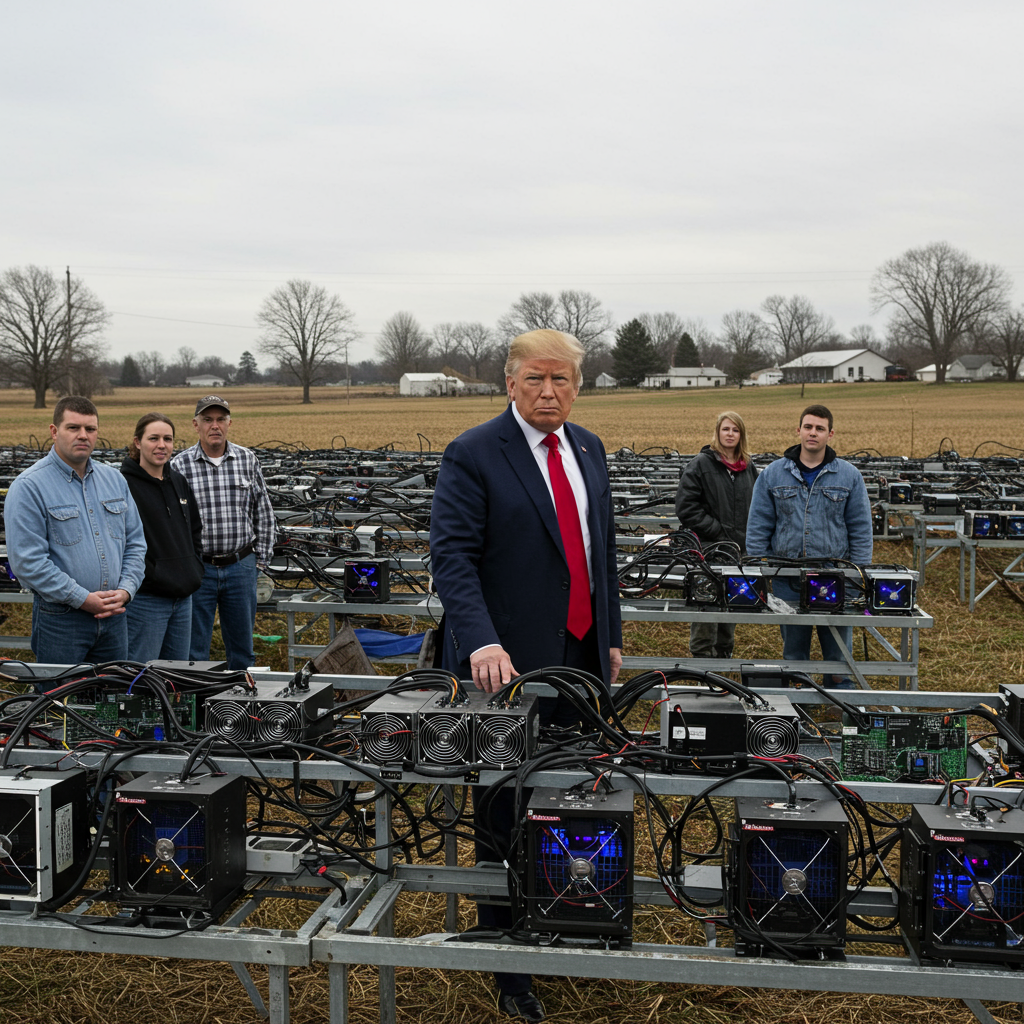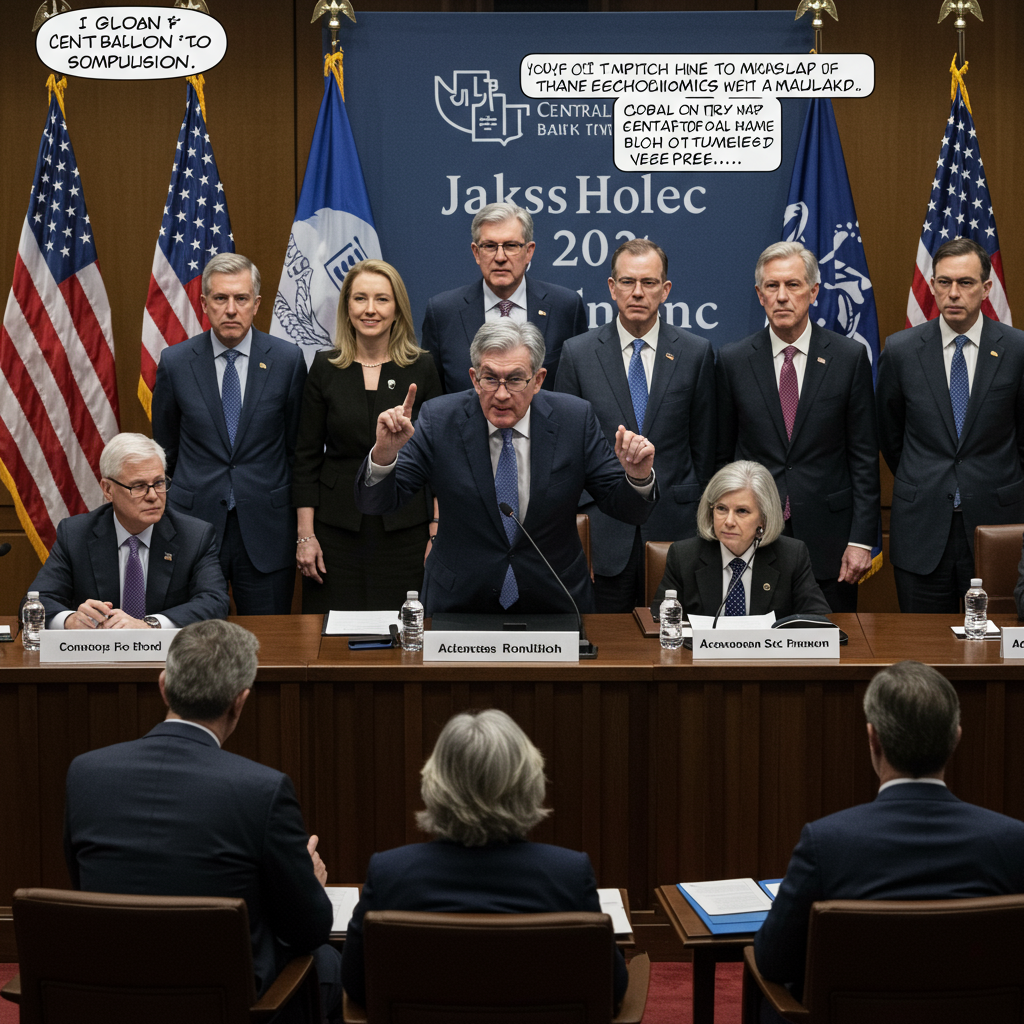For years, a persistent, low hum has become an unwelcome feature in the quiet rural landscape of places like Dresden, New York. This isn’t the sound of nature or distant traffic; it’s the relentless thrum of powerful computers engaged in Bitcoin mining. While the industry flourishes nationally, spurred on by high cryptocurrency prices and recent political endorsements, its tangible impacts – noise, energy use, and environmental concerns – are creating significant friction, particularly in the rural areas that form a key part of former President Donald Trump’s support base.
The Unsettling Hum of Crypto
In Dresden, a village nestled amidst farms and lakes in New York’s Finger Lakes region, the sound emanates from the nearby Greenidge Generation power plant, repurposed for Bitcoin mining. Residents like Ellen Campbell and Lori Fishline describe a constant, unavoidable buzzing that disrupts the peace and quiet they cherish. “We didn’t sign up for the constant hum,” states Campbell, whose lakeside property is affected. Fishline agrees, noting the noise has “definitely affected the peaceful atmosphere of our bay.”
This acoustic annoyance is far from isolated. Across the US, the cooling fans essential for Bitcoin mining operations generate a significant noise footprint. Locals in Niagara Falls, New York, compared the sound to a continuously running 747 jet or a persistent toothache, saying it even drowned out the famous waterfalls. In Granbury, Texas, resident complaints led to the construction of a 24-foot-high sound barrier to mitigate noise that reportedly caused sleeplessness and migraines.
Energy Demands and Environmental Fallout
Beyond the noise, Bitcoin mining’s voracious energy appetite is a major point of contention. This process requires immense computing power to solve complex cryptographic problems that verify transactions, rewarding “miners” with new Bitcoin. Drawn by cheap and abundant energy, these operations have proliferated across the US, now estimated to account for up to 2.3% of the nation’s grid energy use, according to the US Energy Information Administration (EIA). The US currently leads the world in Bitcoin production, mining roughly 40% of the global supply.
This high energy consumption has environmental consequences. A Harvard study published in Nature Communications linked Bitcoin mining operations to harmful air pollution affecting millions of Americans and noted that just 34 mines consumed more electricity than the entire city of Los Angeles, though the industry has pushed back on these findings. Moreover, the strain on local grids can lead to economic impacts; in Plattsburgh, New York, an influx of miners seeking cheap hydroelectricity caused residents’ electricity rates to spike by up to 40% during winter months before the city implemented regulations that led most operations to leave.
Trump’s Pro-Crypto Push Meets Local Reality
The friction highlights a potential challenge for Donald Trump, who has dramatically shifted his stance on cryptocurrency from skepticism (calling Bitcoin a “scam” less than four years ago) to an active promoter. Trump now aims to make the US the global crypto-mining capital, stating his desire for “all the remaining Bitcoin to be made in the USA.” This push is underscored by his family’s involvement in crypto ventures, including a mining company called American Bitcoin and the launch of his own $TRUMP coin.
However, this national policy is clashing with local resistance born from the tangible negative impacts of mining facilities. For residents like Ellen Campbell, the issue has tested her political loyalties. “Right now I’m not real happy about that party,” she stated regarding Trump’s Bitcoin backing. In heavily Republican areas of North Carolina and Georgia, retired resident Cyndie Roberson has actively campaigned against mining operations, finding that concerns over “wreck[ing] our property and our peace” often transcend political affiliation. These grassroots efforts have led to bans on new mining developments in some towns and restrictions or outright bans enacted by county commissions, even in regions where Trump received overwhelming support in the last election.
Industry Countermeasures and an Uncertain Future
Facing local pushback and legal battles, like the ongoing one between New York state and Greenidge Generation over environmental permits, the industry and the administration are exploring ways to mitigate conflict. Commerce Secretary Howard Lutnick has suggested facilitating miners building their own power plants alongside operations to reduce reliance on the public grid and avoid impacting residential electricity costs, a strategy he believes could “turbocharge” US mining. Furthermore, some states are reportedly passing laws that prohibit municipalities from banning Bitcoin mines, providing companies with a legal defense against local opposition.
Yet, the industry remains described as “footloose,” capable of quickly relocating to areas with less stringent regulations or cheaper energy, as seen in Plattsburgh. The future landscape of Bitcoin mining in the US is also subject to volatility from fluctuating crypto prices, evolving energy sources (such as potential shifts to offshore renewable energy facilities that lack other buyers), and the possible emergence of more energy-efficient alternative cryptocurrencies.
While national policy favors growth, the “Bitcoin hum” and its associated issues are ensuring that the debate over the industry’s expansion continues to play out intensely at the local level, posing an unexpected challenge in the very communities crucial to President Trump’s political base.
References
- https://www.bbc.com/news/articles/cx2qg6e03l2o
- https://www.bbc.co.uk/news/articles/cx2qg6e03l2o



